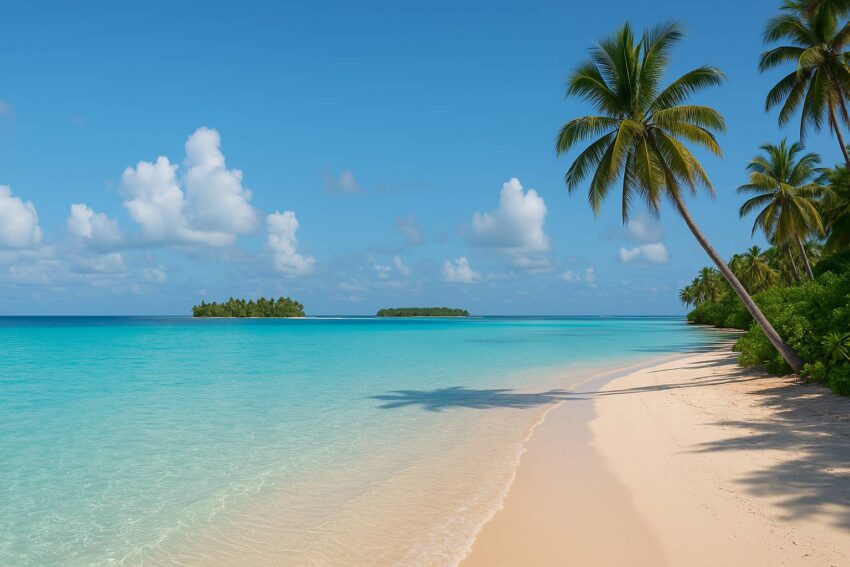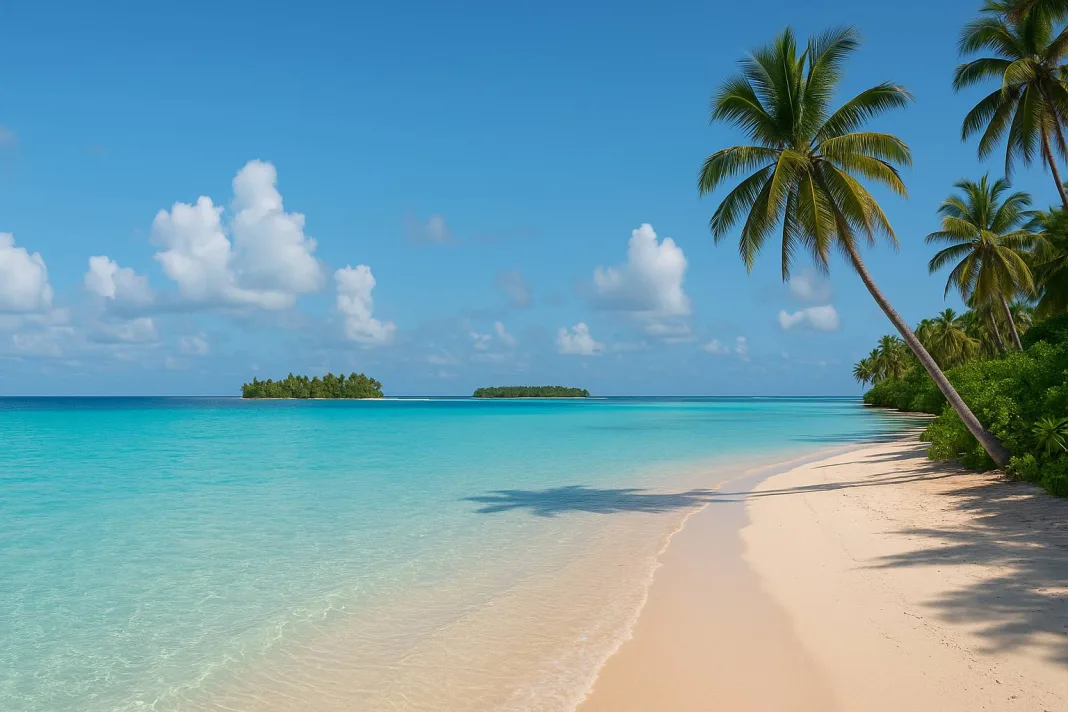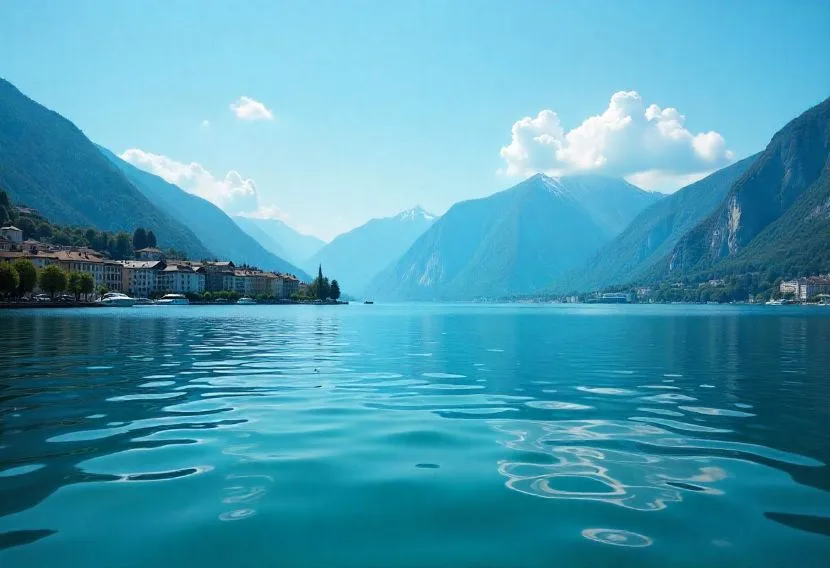Published on
August 24, 2025
By: Tuhin Sarkar

Tuvalu joins Australia, New Zealand, Cook Islands, Samoa, Vanuatu, and Palau in promoting ultra luxury tourism to the tourists, travellers and the adventure seekers from US, UK, Germany, Italy, Spain, and China, and this new update is here to reshape the way travellers look at the Pacific. Tuvalu now added with these strong destinations with new strategies, unique culture, and untouched lagoons, while Australia promotes its Gold Coast resorts, New Zealand highlights luxury lodges, Cook Islands expand boutique escapes, Samoa blends culture with island comfort, Vanuatu markets boutique beach stays, and Palau advances ultra luxury diving resorts. Together, they now target US, UK, Germany, Italy, Spain, and China, building links that make Oceania a magnet for ultra luxury tourism.
This update is not just news. It is a signal of change. Tuvalu joins the conversation with small but meaningful steps, and Australia continues to lead with mega beach hotels. New Zealand brings nature into the heart of ultra luxury travel. Cook Islands design products for romantic getaways. Samoa offers cultural warmth with modern rooms. Vanuatu mixes adventure with boutique luxury. Palau invests in diving and private yachts. All of these efforts are focused on US, UK, Germany, Italy, Spain, and China, the largest outbound markets in the world.
Tuvalu joins with its authentic story, and this new update shows how the Pacific is uniting. The result is clear: ultra luxury tourism is no longer limited to Europe or Asia alone. Oceania is ready, and Tuvalu joins the leaders in making it happen.
Oceania is one of the most beautiful parts of the world. In 2025, its countries are seeing a major rise in tourism. More travellers are visiting the beaches. More luxury hotels are opening. Ultra-luxury islands are gaining fame. Australia, New Zealand, Fiji, French Polynesia, Cook Islands, Samoa, Vanuatu, Palau, Solomon Islands, New Caledonia and Tuvalu are all pushing hard to boost arrivals. They want to welcome visitors from across the world. They are building new hotels, improving flights, and promoting their islands. Each country has its own story. Together, they show why Oceania is now one of the strongest luxury travel markets in the world.
Tuvalu: The Smallest Gem in Oceania
Tuvalu is one of the world’s smallest countries. It welcomed just over 3,100 visitors in 2023, but numbers are slowly rising. In late 2024, nearly 1,000 visitors came in one quarter. 2025 is expected to see further growth.
Tuvalu is tiny, but it has big charm. Flights arrive from Fiji, with more frequencies added in August 2025. This makes weekend trips easier. The main property is the Funafuti Lagoon Hotel, with basic but scenic rooms. There are no ultra-luxury resorts yet. Instead, visitors come for culture, quiet, and pristine lagoons.
Tuvalu is positioning itself as an eco-niche destination. It may not attract mass tourism, but it can target high-value travellers who want untouched nature. Packages combining Fiji and Tuvalu are now possible, giving visitors a mix of private-island luxury and authentic village life. This is a smart path for a country with limited land but huge heart.
Australia: Luxury on the Beaches of the Gold Coast
Australia has long been known for its golden beaches. In 2025, the country is again shining in the global tourism market. International arrivals crossed 7.7 million in the year ending March 2025. Spending reached more than A$35 billion in twelve months. This shows clear recovery and strong demand.
The Gold Coast is a leader in luxury growth. The new Mondrian Gold Coast hotel opened in June 2025. It stands right on Burleigh Beach. The property has stylish rooms, private beach houses, and modern design. The Star precinct is also adding more five-star hotels. This is helping Australia meet rising demand from wealthy travellers. With its mix of surf, city life, and fine resorts, Australia is putting itself back on the map as a luxury hotspot.
New Zealand: Natural Beauty Meets Ultra-Luxury
New Zealand is welcoming more overseas visitors in 2025. The country recorded 3.38 million arrivals in the June year. Officials say it is on track to reach 2019 levels by 2026. Most visitors come for the landscapes, the culture, and the safety of travel.
Luxury travel is also getting a major boost. The famous Huka Lodge in Taupō reopened in March 2025. It was closed for a full redesign. The new version has modern suites, fine dining, and the classic riverside charm. This property is known worldwide as one of the best ultra-luxury lodges. The reopening shows how New Zealand is blending its natural beauty with world-class hospitality. Visitors can hike mountains by day and return to five-star comfort by night.
Fiji: Record Arrivals and Private Islands
Fiji is experiencing record-breaking numbers. July 2025 saw 99,311 arrivals, the highest ever for that month. April 2025 also posted strong results with more than 80,000 visitors. The Reserve Bank of Fiji says tourism is now the backbone of the economy.
Fiji is a land of islands, and many of these islands host ultra-luxury resorts. COMO Laucala Island is one of the most famous. It offers private villas, its own airstrip, and complete privacy. Kokomo Private Island is another jewel. These properties focus on high-value travellers. Guests arrive on private planes, stay in secluded villas, and enjoy white sand beaches. These resorts show how Fiji is positioning itself as a world leader in ultra-luxury travel.
French Polynesia: Bora Bora and Eco-Luxury
French Polynesia, known for Tahiti and Bora Bora, continues to attract high-spending travellers. The islands welcomed over 24,000 visitors in May 2025, a 19% rise from last year. The full year 2024 saw 326,000 visitors. The numbers are smaller than bigger nations, but the value per visitor is very high.
Luxury in French Polynesia is defined by overwater villas. Resorts like the Four Seasons and Conrad Bora Bora offer dream escapes. But the most famous ultra-luxury property is The Brando on Tetiaroa. It is known for being green and sustainable. The resort uses seawater air-conditioning that cuts energy use by 90%. It mixes luxury with responsibility. This shows how the islands are blending eco-tourism with ultra-luxury in a smart way.
Cook Islands: Boutique Luxury by the Lagoon
The Cook Islands are small, but they are growing in tourism power. In June 2025, the islands welcomed more than 16,900 visitors. Most came from New Zealand, which is the nearest big market.
The Cook Islands are not full of mega-hotels. Instead, they offer boutique lagoon resorts. Aitutaki is one of the most beautiful atolls, with crystal-clear waters and soft beaches. Here, travellers stay in villas right on the water. They snorkel in marine reserves, enjoy spa treatments, and relax far from the world. The country is promoting itself as a safe and peaceful luxury getaway for couples and families.
Samoa: Cultural Charm and Growing Resorts
Samoa is also showing growth in 2025. June arrivals were over 23,000, a rise of 4.4% compared with the year before. Most visitors come for holidays and family visits.
On the luxury side, the Taumeasina Island Resort near Apia is the top property. It offers beachfront villas and modern facilities. Samoa is not yet a big player in ultra-luxury, but it has a strong cultural angle. Visitors enjoy traditional dances, local food, and village tours alongside beach holidays. This gives Samoa a different identity, mixing culture with comfort.
Vanuatu: Adventure with Boutique Luxury
Vanuatu is another Pacific nation rebuilding tourism. In May 2025, more than 11,000 arrivals were recorded. Most visitors came from Australia.
Luxury in Vanuatu is still small in scale. Resorts around Port Vila and Santo are leading. These boutique five-star properties focus on beach views, diving, and cultural tours. Cruise ships are also returning, bringing more visitors. Vanuatu markets itself as an adventure destination with touches of luxury. Snorkelling, volcano visits, and cultural shows make it stand out.
Palau: Diving Meets Ultra-Luxury Growth
Palau is famous for diving. In June 2025, the country welcomed more than 6,300 visitors. Arrivals in the first part of the year were up more than 20%.
Palau is now adding new luxury properties. Hotel Indigo Palau is under development. The Four Seasons Explorer cruise ship already offers a floating five-star resort. Plans for a land-based Four Seasons resort are also in place. Palau is using its marine heritage to attract high-end travellers. Diving with manta rays in the morning and dining at a fine restaurant in the evening is the new Palau experience.
Solomon Islands: Slow but Steady
The Solomon Islands recorded over 11,000 arrivals in the first quarter of 2025. Most came for holidays, though numbers are still modest.
Luxury options remain limited. The country markets itself as an eco-adventure destination. Villages, WWII history, and diving are the main attractions. Over time, the Solomons may develop boutique resorts, but for now it is a niche market for explorers.
New Caledonia: Rebuilding After Unrest
New Caledonia had a weak start to 2025. January saw only 3,400 tourist arrivals, down more than 60% from last year. Social unrest in 2024 hurt the sector.
Still, New Caledonia remains a luxury beach market with strong potential. Nouméa has French-style resorts with lagoon access. As stability returns, more travellers may rediscover its blend of European luxury and Pacific charm.
Tuvalu: A Destination Guide for UK and US Tourists
Tuvalu is one of the world’s smallest countries and one of its rarest gems. Floating in the vast Pacific between Australia and Hawaii, this island nation is made up of nine low-lying atolls and reef islands. It is not a place of five-star mega resorts or neon nightlife. Instead, Tuvalu offers something increasingly scarce in today’s travel world: space, silence, authenticity, and an ocean that glows like liquid crystal.
In 2023, Tuvalu welcomed just over 3,100 visitors, making it one of the least-visited countries on Earth. That number is beginning to grow, thanks to improved flight links and more promotion by the South Pacific Tourism Organisation. In 2025, Fiji Airways doubled its weekly flights from Nadi, making Tuvalu more accessible than ever for travellers chasing a truly off-the-grid experience.
This is a destination for people who want to travel differently. It is about lagoon days, cultural immersion, and knowing your footprint is light. Here’s your full guide to visiting Tuvalu in 2025.
Getting There
Tuvalu is connected to the world through Fiji Airways, which runs direct flights from Nadi to the capital, Funafuti. Until August 2025, there was just one flight a week, making planning difficult. Now, with a second Friday service, weekend getaways are suddenly possible. This is more than convenience—it is a turning point for Tuvalu’s tourism. It means travellers can hop from luxury island stays in Fiji to the untouched charm of Tuvalu in a single trip.
Flights are on small ATR-72 aircraft. Expect a scenic approach as the atoll comes into view, with turquoise lagoons on one side and the endless Pacific on the other. This is one of the most dramatic landings in the world, touching down on a short runway that doubles as a playground and jogging track when planes are not arriving.
Where to Stay
Tuvalu does not have large international hotels or ultra-luxury resorts. That is part of its charm. Accommodation is small-scale, intimate, and community-rooted.
Funafuti Lagoon Hotel
The flagship property is the Funafuti Lagoon Hotel, once called the Vaiaku Lagi Hotel. It sits right on the waterfront, offering simple but comfortable rooms, a breezy restaurant, and stunning views over the lagoon. This hotel is owned by the government and is often used by visiting officials, but travellers are welcomed with the same warmth.
Filamona Lodge
If you want to stay close to the runway and enjoy a casual café vibe, Filamona Lodge is a long-time favourite. It is modest, homely, and often described as the best place to meet locals and fellow travellers.
Esfam Lodge
For central convenience, Esfam Lodge is another established choice. Rooms are basic but clean, and the location puts you within walking distance of shops and the waterfront.
NiuEti Lodge
A newer entry is NiuEti Lodge, which is beginning to appear across booking platforms. It offers modern touches, air-conditioned rooms, and hearty breakfasts. While it may not be luxury in the traditional sense, it represents the evolving face of Tuvalu’s accommodation scene.
Adults-Only Hotels?
If you are looking for adults-only properties, know that Tuvalu does not yet have any dedicated 18+ resorts. Lodging here is for everyone, whether travelling solo, with friends, or as a couple. This keeps Tuvalu’s hospitality rooted in community rather than exclusivity.
What to See and Do
Tuvalu is small, but its experiences are deeply memorable. Life here moves slowly, and attractions are tied to the land, the lagoon, and the people.
Funafuti Conservation Area
The crown jewel of Tuvalu is the Funafuti Conservation Area, a 33-square-kilometre zone protecting reefs, lagoons, and six uninhabited islets. This is where you snorkel with reef fish, spot sea turtles, and swim in waters so clear they feel unreal. Boat trips can be arranged through local operators, often turning into full-day excursions with beach picnics on the islets.
WWII Heritage
History buffs will find surprising traces of World War II on Funafuti. The American military built the island’s airstrip, and relics remain scattered along the shore. On Tepuka islet, you can visit a well-preserved underground bunker. These sites make Tuvalu more than just beaches—they tell a story of global history played out on tiny islands.
David’s Drill
Science lovers will appreciate David’s Drill, a landmark site from the late 1800s where geologists tested Darwin’s atoll formation theory. It is a reminder that these fragile islands are also keys to understanding our planet.
Tuvalu Philatelic Bureau
For something charmingly niche, visit the Tuvalu Philatelic Bureau. Tuvalu is famous among stamp collectors worldwide. Buying a set is not only a quirky souvenir but also a way to support the local economy.
Women’s Handicraft Centre
To bring home a piece of Tuvaluan culture, stop at the Women’s Handicraft Centre near the airport. Here you will find woven fans, mats, and baskets made by local artisans. It’s a place where your money directly helps women in the community.
Queen Elizabeth II Park
For a slice of daily life, head to Queen Elizabeth II Park on the waterfront. This reclaimed space is used for community events, sports, and evening strolls. On flight days, the nearby runway turns into a gathering spot, with kids riding bicycles until the plane comes in.
Eating and Drinking
Food in Tuvalu is simple, fresh, and rooted in island traditions. Expect plenty of fish, taro, coconut, and tropical fruits. Most lodges offer set meals, but don’t miss the chance to sample home-cooked fare. Community feasts, especially during festivals, feature pulaka (a root crop), seafood stews, and local desserts. There are few formal restaurants, but the joy here is in sharing meals with locals and tasting recipes passed down through generations.
Culture and Community
Tuvalu’s culture is defined by its people. Islanders are known for their warmth, generosity, and pride in traditions. Villages centre around the falekaupule, or meeting house, where decisions are made and dances performed. If you are lucky, you may witness a cultural night with music, storytelling, and dance. These are not staged shows but authentic community gatherings.
Tourism is small, so interactions are personal. You might be invited to join a family picnic, play volleyball with locals, or share a drink under the stars. It is this closeness, more than any luxury suite, that makes Tuvalu unforgettable.
Practical Tips for Travellers
- Plan flights early. With only two weekly services, seats fill quickly.
- Pack light. Space is limited on small planes.
- Respect customs. Dress modestly outside resorts, and always ask before photographing people.
- Be patient. Internet and phone signals can be slow, and services limited. Travel here is about slowing down.
- Travel insurance. With limited medical facilities, it is essential.
The Future of Tourism in Tuvalu
Tuvalu is not aiming for mass tourism. The government is clear that it wants high-value, low-volume growth. With only a handful of lodges, there is no space—or desire—for sprawling resorts. Instead, Tuvalu is looking to position itself as an eco-niche destination. By attracting travellers who care about sustainability and culture, the country hopes to balance tourism benefits with environmental protection.
International support is also helping. The Pacific Tourism Data Initiative is training staff and rolling out visitor surveys in 2025, which will give Tuvalu better insight into what travellers want. This data will guide investment in small lodges, conservation projects, and community-based tourism.
Why Visit Tuvalu Now
Tuvalu is a destination for those who have seen it all and want something different. It is for travellers who find beauty in simplicity and magic in silence. While other islands build bigger resorts, Tuvalu remains untouched. Its lagoons are clean, its villages are welcoming, and its scale is human.
In 2025, with new flight options and a handful of refreshed lodges, Tuvalu is at a rare sweet spot. It is accessible enough to visit without weeks of planning, but remote enough to feel like a secret. For travellers willing to take the journey, Tuvalu offers the kind of travel experience that is becoming almost impossible to find—pure, authentic, and humbling.
Tuvalu may be one of the smallest nations in the world, but in travel it offers something very large: a sense of connection. Connection to nature, to community, and to yourself. It is not a destination of marble lobbies or Michelin-star dining. It is a place of clear lagoons, soft breezes, and smiles that greet you like family.
In 2025, Tuvalu is beginning to step into the spotlight. More flights are bringing curious travellers. New lodges are opening their doors. But its soul remains the same. If you are searching for a destination that feels timeless, Tuvalu is waiting for you.
Why Oceania is Rising in 2025
Across Oceania, the message is clear. Tourism is back. Visitors want beaches, culture, and safety. Countries are responding with new hotels, more flights, and better marketing. Australia and New Zealand lead in big numbers. Fiji and French Polynesia lead in ultra-luxury. Smaller islands like Samoa, Cook Islands, and Palau are finding niches. Tuvalu is starting its own journey.
Luxury travel in Oceania is not just about comfort. It is about identity. Resorts are mixing eco-ideas with design. Communities are sharing culture. Governments are tracking arrivals better. Together, they are making the region stronger.
Oceania in 2025 is more than a paradise. It is a powerhouse of beach and ultra-luxury travel. Australia, New Zealand, Fiji, French Polynesia, and Tuvalu each play a role. From overwater villas to boutique resorts and eco-lodges, the region has something unique for every traveller. The numbers show growth. The hotels show quality. The islands show heart. Oceania is not just rising again. It is setting the standard for the future of global tourism.







